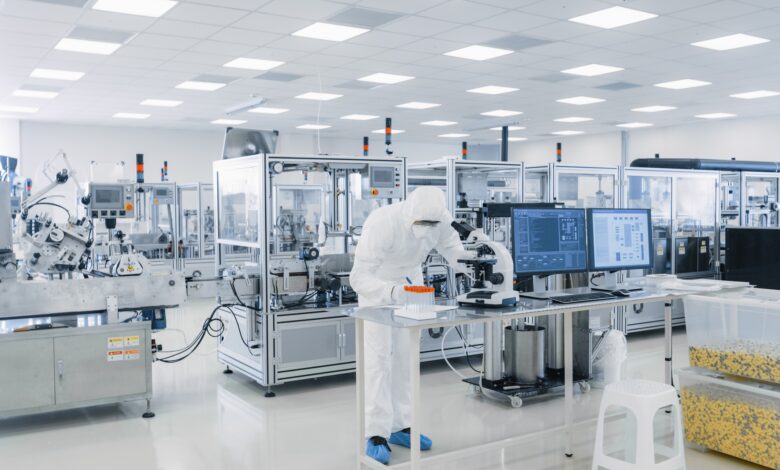How to Start a Pharmaceutical Industry

Starting a pharmaceutical industry is a complex and multi-faceted endeavor that requires careful planning, significant investment, and a thorough understanding of both the scientific and regulatory landscape. This article will guide you through the essential steps to establish a successful pharmaceutical company.
1. Conduct Thorough Market Research
Before diving into the pharmaceutical industry, it is crucial to conduct extensive market research. This research should cover:
- Market Demand: Identify the therapeutic areas with high demand and potential for growth. Evaluate the competition and market trends.
- Regulatory Environment: Understand the regulatory requirements for pharmaceutical products in your target markets. Each country has its own set of regulations and compliance standards that must be met.
- Target Audience: Define your target audience, including healthcare providers, patients, and pharmacies.
2. Develop a Business Plan
A comprehensive business plan is the cornerstone of your pharmaceutical venture. It should include:
- Executive Summary: Overview of your business objectives and strategies.
- Market Analysis: Detailed insights from your market research.
- Organizational Structure: Outline the company structure, including key personnel and their roles.
- Product Line: Description of the pharmaceutical products you plan to develop and market.
- Financial Projections: Estimated costs, revenue projections, and funding requirements.
3. Secure Funding
Starting a pharmaceutical company requires substantial capital. You can secure funding through various means:
- Investors: Attract private investors or venture capitalists by presenting a compelling business plan.
- Loans: Obtain business loans from banks or financial institutions.
- Grants: Explore government grants and subsidies available for pharmaceutical research and development.
4. Establish a Research and Development (R&D) Facility
The heart of a pharmaceutical company is its R&D facility. This is where new drugs are discovered, developed, and tested. Key steps include:
- Location: Choose a location with access to skilled scientists, researchers, and necessary infrastructure.
- Equipment: Invest in state-of-the-art laboratory equipment and technology.
- Personnel: Hire experienced scientists, researchers, and technicians.
5. Compliance and Regulatory Approvals
Compliance with regulatory standards is critical in the pharmaceutical industry. Key regulatory bodies include:
- FDA (Food and Drug Administration): In the United States, the FDA oversees the approval of new drugs.
- EMA (European Medicines Agency): In Europe, the EMA is responsible for the scientific evaluation of medicines.
- ICH (International Council for Harmonisation): Provides guidelines for pharmaceutical development and regulatory standards globally.
You must adhere to Good Manufacturing Practices (GMP) and ensure that your products meet safety, quality, and efficacy standards.
6. Develop and Test Pharmaceutical Products
The development process includes several stages:
- Discovery: Identify potential drug candidates through research and screening.
- Preclinical Testing: Conduct laboratory and animal tests to evaluate safety and efficacy.
- Clinical Trials: Perform human trials in phases (Phase I, II, III) to further assess the drug’s safety, dosage, and effectiveness.
- Approval: Submit your findings to regulatory bodies for approval.
7. Manufacturing and Production
Once your product is approved, you can begin large-scale manufacturing. Key considerations include:
- Facility: Establish a manufacturing facility that complies with GMP.
- Equipment: Invest in high-quality production equipment.
- Packaging: Ensure your products are packaged securely. For instance, using gusseted mylar bags at wholesale rates can be an efficient packaging solution for bulk products.
8. Marketing and Distribution
Effective marketing and distribution strategies are essential for the success of your pharmaceutical products. Steps to consider:
- Branding: Develop a strong brand identity and marketing materials.
- Sales Team: Build a knowledgeable sales team to promote your products to healthcare professionals.
- Distribution Network: Establish a robust distribution network to ensure your products reach pharmacies, hospitals, and clinics efficiently.
9. Post-Marketing Surveillance
Even after your product is on the market, continuous monitoring is necessary to ensure its safety and efficacy. This includes:
- Pharmacovigilance: Monitor adverse effects and take corrective actions if necessary.
- Feedback: Gather feedback from healthcare providers and patients to improve your products.
10. Continuous Innovation and Expansion
The pharmaceutical industry is ever-evolving. To stay competitive, you must continuously innovate and expand your product line. This can be achieved through:
- Research: Invest in ongoing research to discover new drugs and improve existing ones.
- Collaborations: Partner with research institutions, universities, and other pharmaceutical companies.
- Global Expansion: Explore opportunities to enter new markets and expand your global footprint.
Conclusion
Starting a pharmaceutical industry is a challenging but rewarding endeavor. It requires a clear vision, meticulous planning, and a commitment to innovation and quality. By following these steps and remaining adaptable to industry changes, you can establish a successful pharmaceutical company that contributes to global health and wellness.



